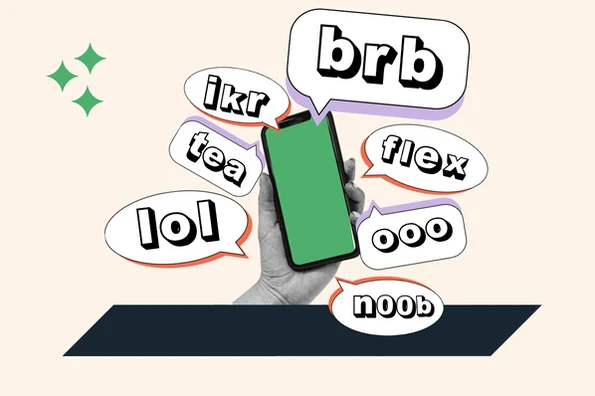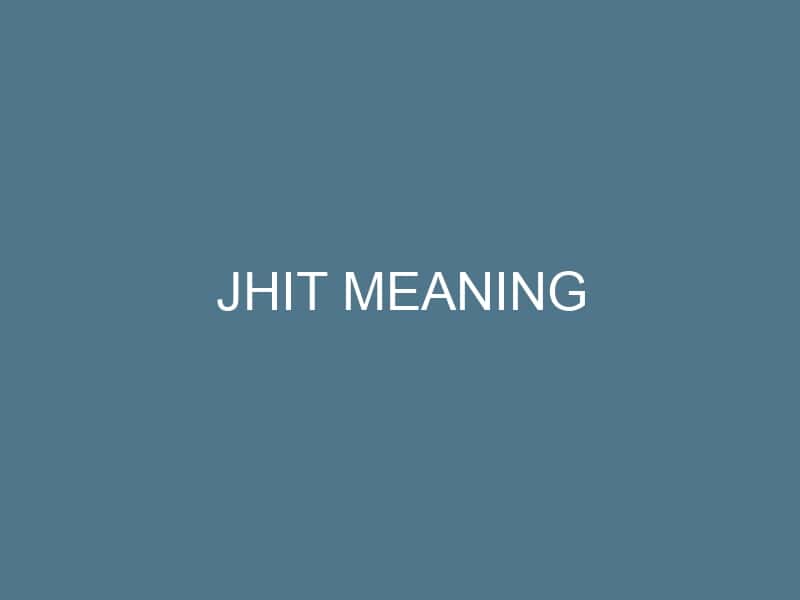In the fast-paced world of digital communication, where brevity is king, internet slang terms have emerged as vital components of online discourse. These slangs evolve and spread at an accelerating pace, creating a dynamic lexicon that can be puzzling to both digital natives and newcomers alike. Among the newer entrants to this internet vocabulary is “JHIT,” a term that has captured the curiosity of many. This article aims to decode the meaning of JHIT, providing insights into its use and the broader context of modern internet slang.
With the emergence of texting and social media platforms, digital communication underwent a transformation. The pursuit of quick and efficient ways to convey messages led to the proliferation of abbreviations and acronyms. These compact forms of expression are not only indicative of the informality prevalent online but are essential to the rich tapestry of internet culture. They range from the widely recognized “LOL” for “laugh out loud” to more nuanced expressions like “SMH” for “shaking my head.” To truly understand the landscape of digital communication, one must become familiar with a variety of internet slang, such as the nuances behind MK meaning and the financial shorthand BTC meaning.
Unraveling the Mystery of JHIT: An Exploration of Modern Internet Slang
| Topic | Key Points |
|---|---|
| Introduction to Internet Slang | – Internet slang is a critical part of digital communication. – Slang like JHIT evolves rapidly and is part of an ever-changing online lexicon. |
| The Emergence of Texting Abbreviations | – Abbreviations emerged from the need for brief and efficient communication. – To understand digital culture, familiarity with terms like MK meaning and BTC meaning is essential. |
| Decoding JHIT and Its Usage | – JHIT generally reflects shock or disbelief. – It contrasts with patience (TYT meaning) and is related to genuine reactions (FR meaning) and invitations for more info (TTM meaning). |
| JHIT and Emotional Expression | – Abbreviations like JHIT convey quick emotional responses. – It is used similarly to expressions of disbelief (ISTG meaning) and absurd reactions (IHHT). |
| Relationship to Other Slang Terms | – JHIT is part of a broader digital interaction lexicon. – Related terms include social prompts (LMS meaning) and expressions of missing someone (IMU meaning). |
| Communicating Discontent and Frustration | – Internet slang adeptly expresses dissatisfaction. – JHIT pairs with expressions of disappointment (SMDH meaning) and annoyance (IKYFL meaning). |
| The Rituals of Online Interaction | – Slang terms like JHIT are woven into everyday digital practices. – They relate to social activities (GRWM) and seeking advice (WTD meaning). |
| Generational Differences in Internet Slang | – Younger users often set internet slang trends, creating generational language gaps. – Terms like JHIT may not bridge these gaps as easily as more universal terms like OFC. |
| Conclusion | – JHIT illustrates the continuous evolution of digital communication. – Staying literate in internet slang is key to navigating the online world. |
Understanding JHIT and other similar terms is vital for keeping up with the rapid changes in online communication and ensuring meaningful engagement in digital spaces.
Decoding JHIT and Its Usage
So, what does JHIT stand for? The term is not as straightforward as one might think, and its meaning can vary depending on context. Commonly, JHIT is used to express a state of disbelief or shock, an emotional response to an unexpected or absurd situation. It’s a reaction that might fall between the despair encapsulated by “SMH” and the urgent disbelief conveyed by “WTH” (What The Heck).
JHIT is often used in conversation threads where individuals share surprising or frustrating experiences:
- Comparisons with take your time (TYT meaning) reflect the contrast between patience and the sudden intensity of JHIT.
- Relating to for real (FR meaning), it underscores genuine reaction, though FR is more about affirmation while JHIT conveys shock.
- It shares a connection with talk to me (TTM meaning), which is an invitation for more information, where JHIT might be a reaction to receiving that information.
JHIT and Emotional Expression Online
The ability of abbreviations to quickly transmit emotions and reactions is a cornerstone of their popularity. For JHIT, the emotional undertones are significant—it’s often associated with responses that lightning-fast traditional words might fail to capture. In a world dominated by quick scrolling and rapid consumption of content, JHIT finds its place.
Here’s how JHIT aligns emotionally with other expressions:
- For expressing disbelief, JHIT can be used interchangeably with “I swear to God” (ISTG meaning).
- The notion of surprise or shock that comes with JHIT also resonates with “I had to laugh” (IHHT) which can be used when a situation is so absurd, laughter is the only response.
Relationship to Other Slang Terms
JHIT doesn’t exist in a vacuum. It’s part of a wider network of slang that reflects the dynamics of digital interaction. These terms contribute to the unique communication style that defines online communities.
Several related abbreviations form the ecosystem within which JHIT resides:
- Social media interactions are rife with prompts like “like my status” (LMS meaning) and “I miss you” (IMU meaning).
- The social media lexicon includes terms like “hit you back” (HYB meaning) and “For Your Page” (FYP meaning), indicating engagement and trending content.
Communicating Discontent and Frustration
Just as internet slang can express positive emotions and casual banter, it is also adept at conveying discontent and frustration. JHIT often appears when users vent about situations that elicit irritation or exasperation, serving as a succinct way to broadcast those sentiments.
Here’s how JHIT complements other frustration-related expressions:
- It works in tandem with “shaking my damn head” (SMDH meaning), which is indicative of disappointment or disgust.
- It resonates with “but for real for real” (BFFR meaning), intensifying the sense of annoyance beyond mere exasperation.
- In the space of annoyance and incredulity, “I know you f*ing lying” (IKYFL meaning) is another strong alliance to JHIT.
The Rituals of Online Interaction
Abbreviations like JHIT become part of the rituals that define our digital interactions. They serve as quick, communal touchpoints that users employ to respond to daily online scenarios and conversations.
JHIT’s integration into web-based routines can be seen alongside phrases like:
- “Get ready with me” (GRWM), which signals a more intimate and inclusive social media activity.
- “What to do” (WTD meaning), important for indicating hesitation or the need for advice, where JHIT might be the reaction to the options provided.
Generational Differences in Internet Slang

Internet slang is also a marker of generational language divides. Younger internet users often pioneer and popularize these terms, leading to distinct differences in digital communication across age groups. How older generations interact with terms like JHIT can signify a broader gap in communication styles within the digital realm.
The generational nuances within internet slang manifest as follows:
- “On my momma,” a term used to swear on something sacred, (OMM meaning) can be more common amongst certain age brackets.
- The universal understanding of “of course” (OFC) contrasts with JHIT, which may not be as readily adopted across all demographics.
In conclusion, JHIT represents more than just four letters in a chat window. It signifies the constant evolution of language and communication in the digital age. As the landscape of internet slang continues to expand, it’s important to recognize and adapt to these changes. Just as we once had to learn to navigate websites and emojis, understanding terms like JHIT is crucial for anyone looking to stay literate in today’s online world.








1 thought on “JHIT Meaning”